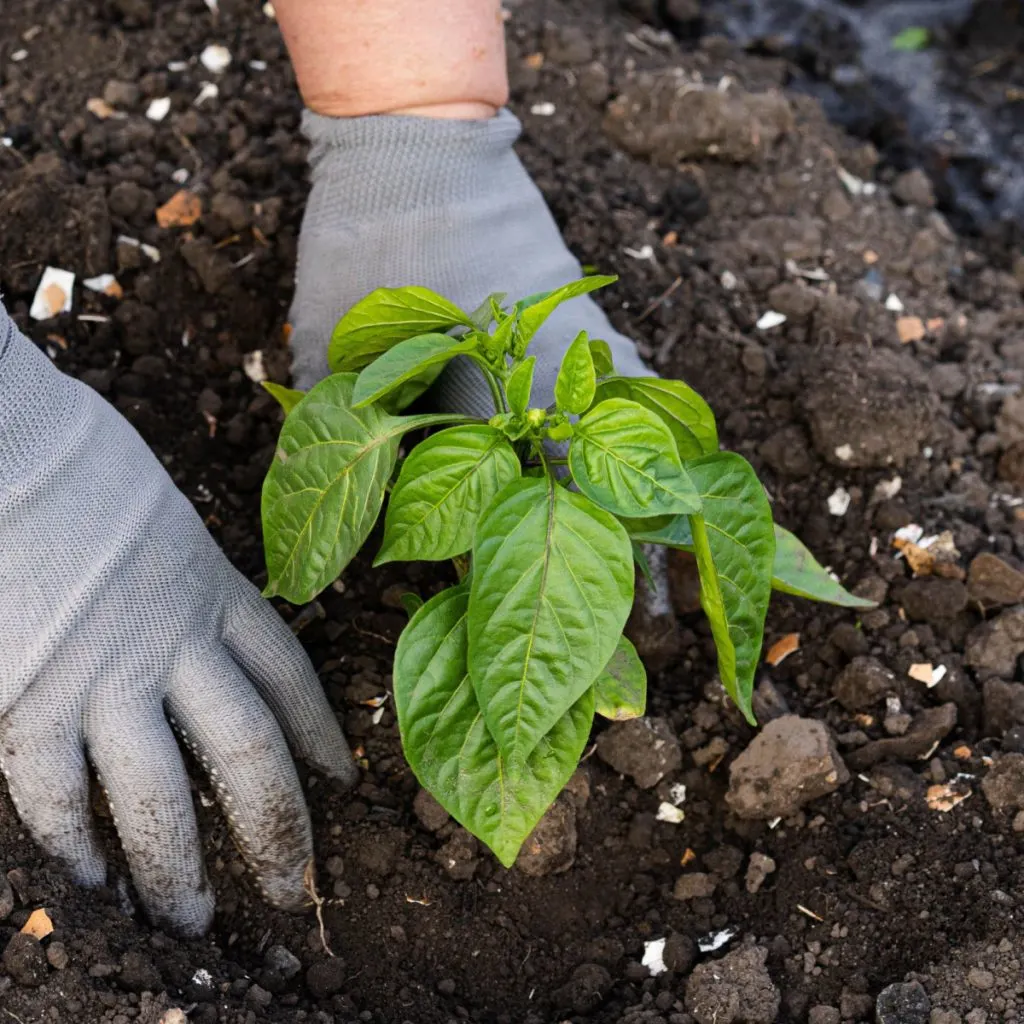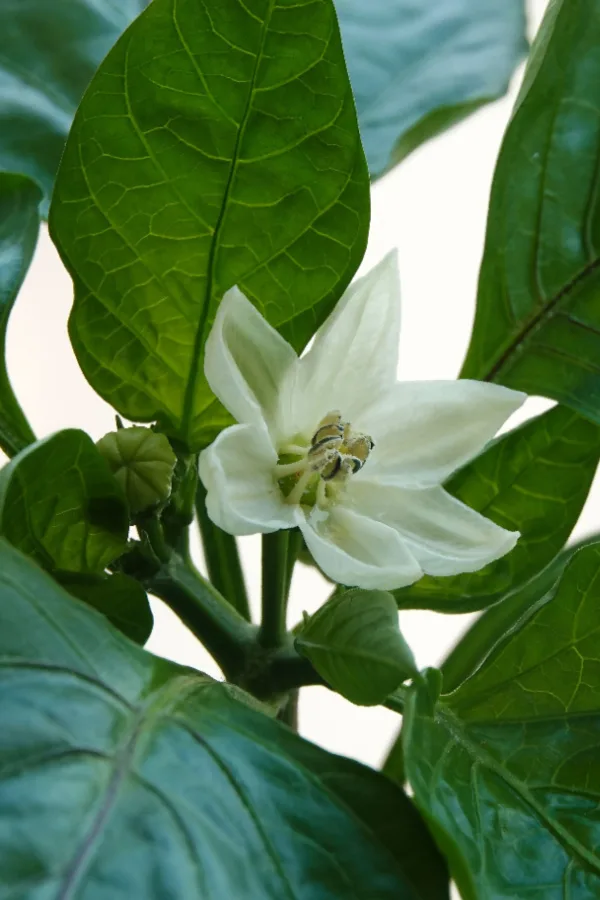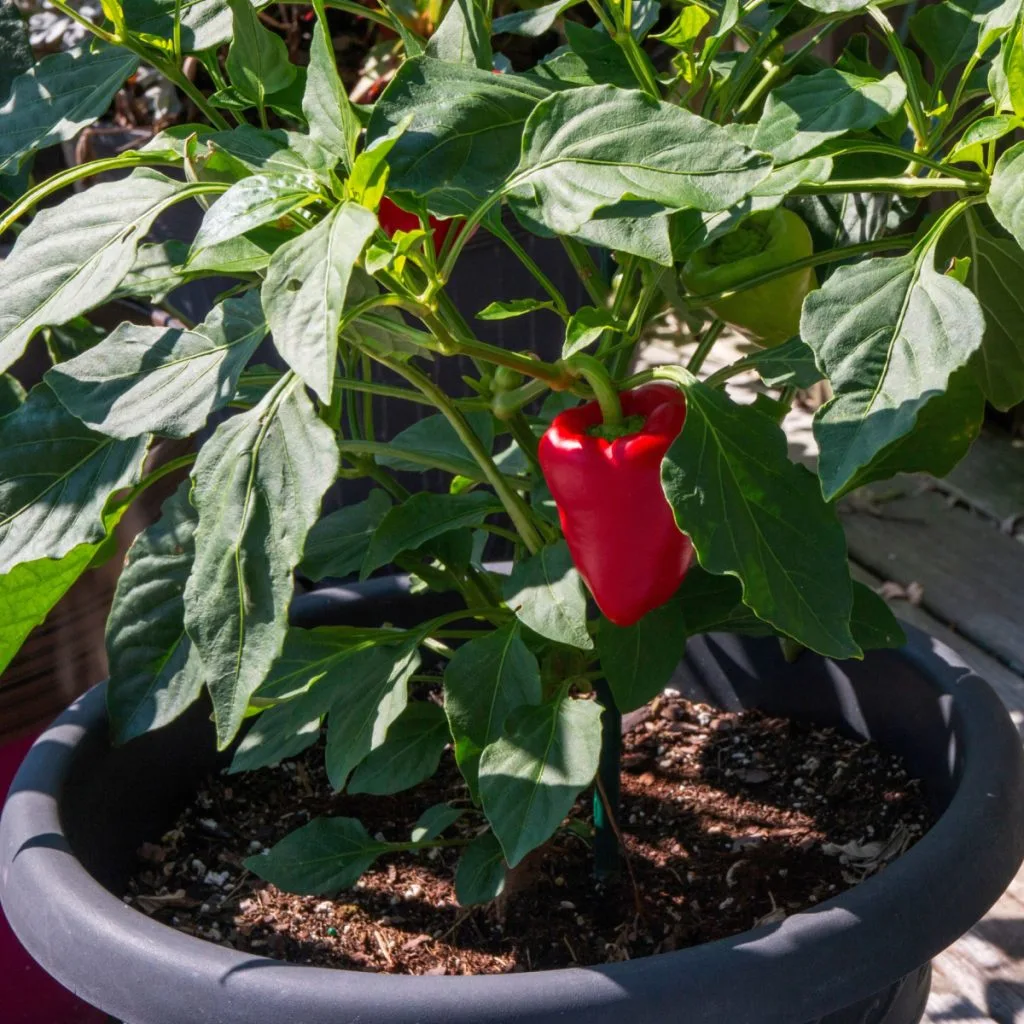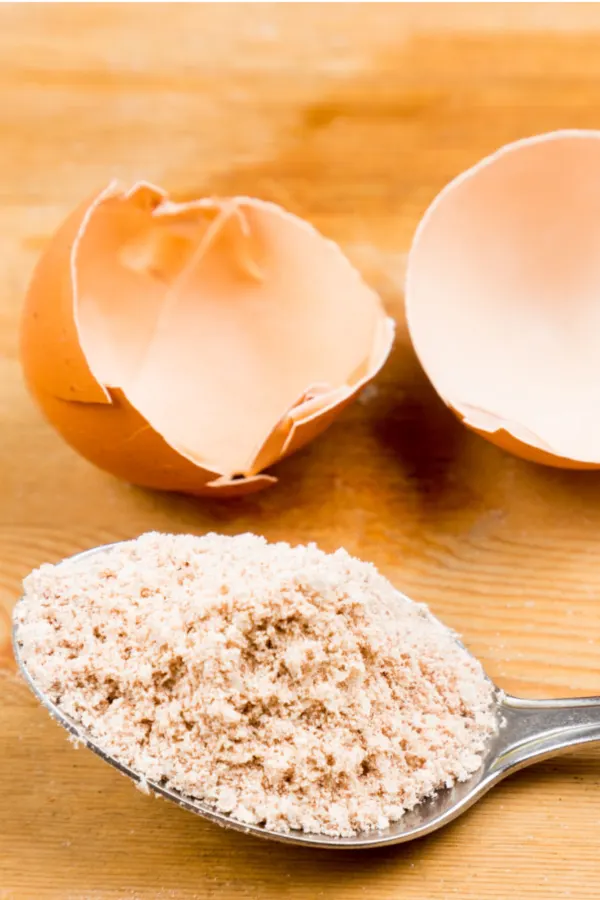Wondering what you should be putting in your planting hole when you plant your pepper transplants this spring into your garden or raised beds?
If you want your pepper plants to grow fast, stay healthy and produce a big harvest, how you plant them in the ground makes a huge difference. And the best way to help young pepper transplants take off is to give them the nutrients they need right from the start.
So how do you do that? As it turns out, there are actually 3 very simple and all natural ingredients that can do the trick – compost, worm castings, and crushed eggshells – and can they ever help get your peppers off to a fast start and a big harvest this summer!

What To Put In A Pepper Planting Hole
Why A Strong Start Matters
One thing is for sure, pepper plants don’t like stress. Whether it’s from poor soil, cold temperatures, or a lack of nutrients, anything that slows them down early can affect how they grow for the rest of the season.
If they struggle early, they’ll take longer to bloom and longer to produce fruit. In fact, if they struggle enough, they might not produce at all.
On the other hand, when peppers get the nutrients they need early in the season, they grow bigger, develop stronger stems – and begin flowering and setting fruit faster. That means more peppers and a longer growing window to enjoy them.
The goal is to give the roots everything they need to grow deep and strong. That all starts with the planting hole. You can opt for regular soil, but adding powerful ingredients to that soil gives your peppers extra energy right from the beginning.
How To Plant Peppers For Success
When planting pepper transplants, it’s important to plant them a little deeper than most plants that go in the garden. By planting deeper, you help anchor the plant better and grow a stronger root system.

Start by digging a hole that’s about twice as wide as the ball of your transplant – and six to eight inches deep. A post hole digger works great for this. That gives you enough room to add ingredients below and around the plant roots.
As you dig, set the soil off to the side. You will be mixing it with your planting ingredients as you replant to give your pepper perfect power. Now, let’s take a look at what to add in the hole to give your peppers everything they need to take off and grow. And that all starts with compost!
1. Compost – How Compost Helps A Pepper Planting Hole
Compost is one of the best all-around ingredients you can add to your planting hole. It’s full of nutrients, helps improve soil texture, and holds moisture. And all three things pepper plants absolutely love.
When you mix compost into your planting hole, it helps loosen the soil, making it easier for young roots to expand. It also holds onto water better than regular soil, so your plant won’t dry out as fast during hot days.

But most of all, compost provides a steady supply of natural nutrients that support strong early growth. When planting, add two to three cups of compost in each planting hole. Mix it into the soil you removed when digging the hole.
It’s also best to place a few inches of compost right at the bottom of the hole before planting. This gives roots immediate access to nutrients as they grow downward
2. Adding Worm Castings To Your Pepper Planting Hole
Worm castings are another must add ingredient to your pepper planting holes. These tiny, nutrient-packed granules come from earthworms. And are they ever loaded with beneficial microbes and trace minerals that help plants grow better!
Worm castings are especially helpful for pepper plants because they release nutrients slowly over time. That means your plant gets a steady supply of food without being overwhelmed. Affiliate Link: 100% Pure Organic Worm Castings Fertilizer.
Castings also improve soil structure, helping it stay loose and well-drained. And that, of course, is exactly what pepper roots need!

Add about 1/2 cup of worm castings per plant directly into the planting hole. You can mix the castings with the compost and soil to help spread out the nutrients.
Worm castings don’t burn plants like chemical fertilizers sometimes can, so they’re very safe to use. They also help protect young plants from disease by boosting the natural microbial activity in the soil.
3. Ground Eggshell Powder
Last but not least, don’t forget the egg shell powder for your pepper plants! Not only can it give your plants a big boost of calcium, it can also help prevent blossom end rot.
Blossom end rot is one of the most common problems gardeners face with pepper plants. It shows up as dark, sunken spots on the bottom of the fruit and is caused by a lack of calcium in the plant.
Even if your soil has calcium, the plant can struggle to absorb it if the roots aren’t healthy or the soil dries out too often. One of the best ways to prevent blossom end rot on peppers is to add ground eggshells into your planting hole.
Eggshells break down slowly, so that is why it is important to first grind them into a powder. To make eggshell powder, simply dry out used eggshells and crush them into a fine powder using a blender, food processor, or rolling pin. Finer powder breaks down faster and is easier for the plant to absorb. See: Are You Using Egg Shells Correctly In Your Garden? The Best Way To Use Egg Shells!

Add 2 to 3 tablespoons of ground eggshell powder per plant when planting. Sprinkle it into the bottom of the planting hole and mix it into the compost and soil before planting. Not only does the calcium help prevent blossom rot, but it also plays a big role in helping the plant grow stronger stems and produce more peppers.
Mulch To Keep Feeding
After planting, the final step is to mulch around your pepper plant. Mulch helps hold moisture, keeps weeds out, and adds even more nutrients as it breaks down.
A great mulch for pepper plants is more compost. Spread a thin layer (about an inch or two) of compost around the base of the plant after planting. You can also sprinkle a little more worm castings on top of the compost to keep feeding your plant slowly over time.
Every time it rains or you water, some of the nutrients from the compost and castings will soak into the soil. This gives your plant an ongoing supply of gentle nutrition all season long.
Keeping the soil covered also helps prevent it from drying out too fast. Peppers don’t like to dry out, and a good mulch helps keep moisture steady. This is especially important for helping them absorb calcium and avoid blossom end rot. For more tips on keeping your pepper plants growing strong and producing big, be sure to check out: How To Jumpstart Pepper Plants – And Get Them Producing Peppers Faster Than Ever! and The Secret To Fertilizing Bell Pepper Plants – How To Grow More Peppers Than Ever!
Here is to giving pepper plants just what they need in their planting hole – and to a big harvest of peppers this summer!
Simple Garden Life
Follow Our Facebook Page For Even More Great Tips! Simple Garden Life Facebook Page
Simple Garden Life is a website dedicated to keeping gardening fun, simple and enjoyable! We publish two new articles each week along with a new garden podcast episode every two weeks. This article may contain affiliate links.
